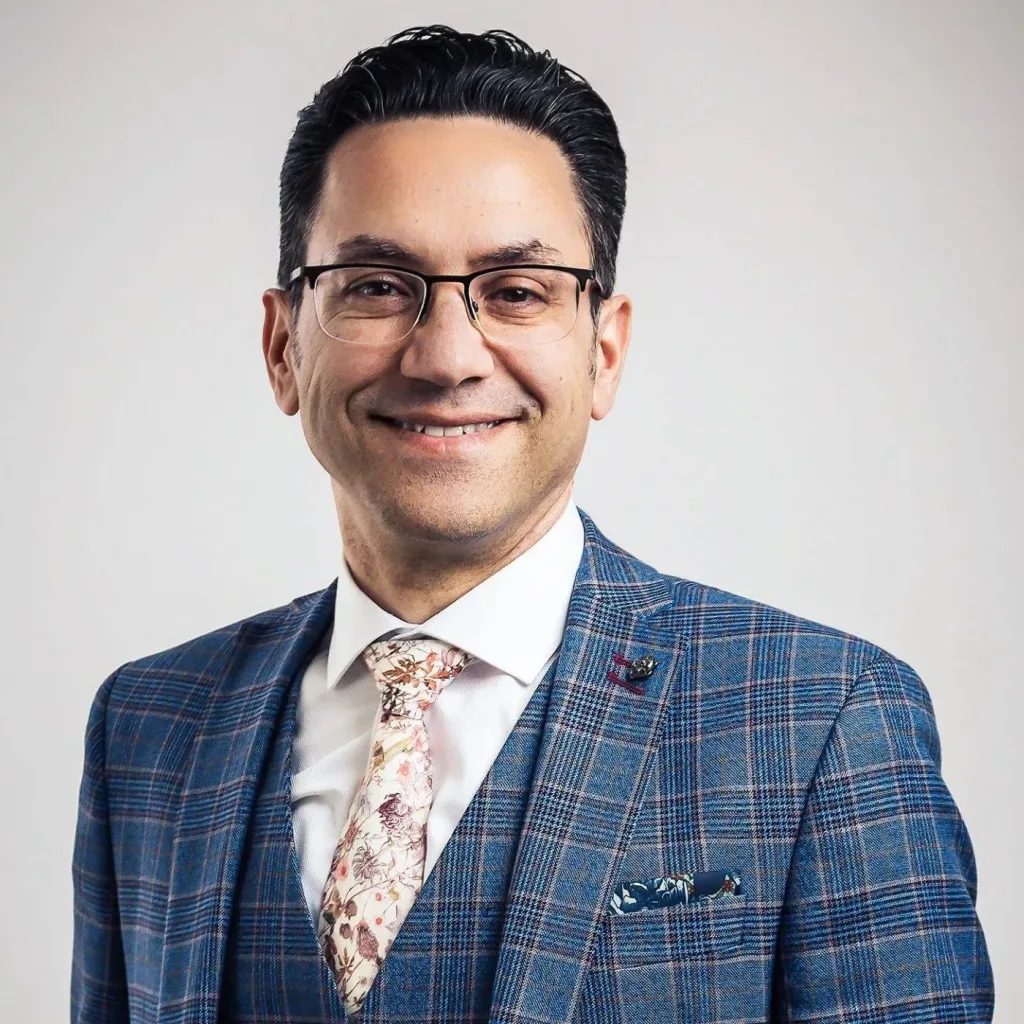Lax or excess skin on the abdomen can often develop as a result of natural ageing, childbirth, or significant weight loss. If excess skin has become a concern, you may be considering a London tummy tuck as a way to address the issue directly.
A tummy tuck is a highly effective cosmetic surgery for reducing lax skin, but some patients may have concerns regarding tummy tuck scars. To put your mind at ease, this article explains the scarring you can expect for each type of tummy tuck and some helpful tips on how to minimise tummy tuck scar appearance during the healing process.
The article will also detail the benefits of laser scar removal, which can effectively reduce the prominence of scars resulting from a tummy tuck or any other type of surgery.
At the CREO Clinic, you can rest assured that you will be attended by our Medical Director, Dr. Omar Tillo, an experienced specialist in body contouring surgeries. Dr. Tillo has performed countless successful tummy tucks over his career and has a proven reputation for high quality outcomes and safe, patient-centred care.
Book an initial consultation with Dr. Tillo and explore the many benefits of a tummy tuck.
Where Are Tummy Tuck Scars Located?
Pelvic Area
Whether you receive a mini tummy tuck or standard tummy tuck, either will remove skin laxity from your lower abdomen, the area between your belly button and pelvis. As such you can expect a thin scar along the bikini line which can range from between four inches to a longer incision that runs from hip to hip. The incision length will depend on whether the severity of the skin laxity on your abdomen. Low to moderate laxity may require a mini or full tummy tuck, While more severe levels of lax skin may call for an extended, or fleur de lis tummy tuck, which involves a vertical scar from the lower breastbone to the pubic bone.
Belly Button
A full tummy tuck results in some scarring around the belly button, as some degree of umbilicoplasty will be part of the procedure. In most cases, the belly button will still be attached to the abdominal wall during the surgery. However, in some cases, the surgeon may need to remove and reposition it to ensure a natural-looking result. Any scarring around the navel is usually hidden by the natural contours of the belly button.
Lower Abdomen
A tummy tuck in cases where patients are experiencing severe skin laxity as a result of drastic weight loss, a fleur-de-lis abdominoplasty may be required. This tummy tuck variation will require an additional vertical incision along the middle of the abdomen, from the rib cage down to the horizontal incision along the bikini line.
Factors That Impact Scarring
Your tummy tuck scars will vary depending on the surgical techniques required to deliver an optimal result, all of which your surgeon will discuss with you after examining your abdomen.
The surgeon you choose can make all the difference in the appearance of your tummy tuck scar: surgeons that are skilled and experienced in the procedure are better able to conceal scarring with the way they create the incisions, manipulate the skin, and close the sutures. We highly recommend choosing a board-certified surgeon specialising in tummy tuck surgery to help ensure your visible scars are minimal.
Other factors that can impact scarring include your age, diet, and the care you take when following aftercare instructions. Close attention should be paid to cleaning and redressing your incisions during recovery, as this will create the best conditions for healing.
Tummy Tuck Healing Time
After Surgery
It typically takes 1-2 weeks for a standard tummy tuck incision to close and begin to heal. You will receive aftercare instructions to help ensure that the incisions heal properly, which in turn helps prevent abnormal scarring.
One Month
One month after your tummy tuck, your incisions will have closed and scar formation should begin. Your body will increase its supply of blood and collagen to the area to help the skin repair itself,which may make the scar appear temporarily darker, thicker, and more prominent.It is important to be conscious that your scar may appear worse before it gets better, but this is a completely normal part of the process
After Six Months
The six-month mark is usually when the appearance of your tummy tuck scar will begin to improve. At this stage, your wounds will have sufficiently healed that your body can start to gradually decrease the blood supply and break down the excess collagen. As a result, the scars will begin to lighten and lose their pigmentation.
Tummy Tuck Scars After One Year
A year after your tummy tuck, any scarring will likely have fully matured, which means it will appear significantly lighter and softer in comparison to the first few months post surgery. However, most tummy tuck scars continue to fade past this point as the body still continues to break down the collagen and reduce the local blood supply. .
Tummy Tuck Scars After Five Years
For most patients, tummy tuck scars will be almost unnoticeable after five years having faded significantly and blended in with the surrounding skin tone. The scars may still continue to fade beyond this point.
Are Tummy Tuck Scars Permanent?
As with all scars, those from a tummy tuck surgery are permanent as they do not completely disappear. However, as outlined in our recovery timeline above, the scars will become less visible over time by becoming thinner and blending in with your skin colour. After several years, most tummy tuck patients barely notice their scars.
How to Minimise Scarring As The Tummy Tuck Heals
Wear the Compression Garment Continuously
A key part of keeping scarring to a minimum is to wear your compression garment continuously for at least six weeks after your surgery, only removing it when you are bathing. The compression garment keeps pressure on your incisions, helping to reduce swelling and aid optimal healing.
Ensure Clean Tummy Tuck Incision Sites
It’s vital to clean your incision sites daily. This will keep your tummy tuck incisions clean and healthy, reducing your risk of infection. You will receive detailed instructions on how to care for your incision before surgery, so make sure to follow them carefully.
Avoid Sun Exposure
We recommend avoiding the sun completely for at least 1-2 weeks after your surgical treatment, as tummy tuck scars are very sensitive to strong sunlight and burn easily. The sun’s rays can cause pigmentation or lasting discoloration of the scars. Additionally, you should use a very strong sunblock (SPF 30 or higher) on your scar for 18 months after your surgery.
Moisturise
After your dressings are removed, we recommend applying a moisturiser to your wounds to help speed up the healing process. Once the incisions have fully healed after 3-4 weeks the use of silicone sheets and gels is encouraged as they hydrate the scar tissue and reduce collagen production, thereby reducing the visibility of the scar.
Avoid Irritating Clothes
You should wear loose and breathable fabrics the first few weeks after surgery as wearing tight and uncomfortable clothing may irritate the incisions and delay their healing. Additionally, you must wear your post-surgery compression garment for at least 6 weeks. The garment is designed to fit you perfectly, working to minimise swelling and improve circulation..
Laser Skin Resurfacing Treatments Can Lighten Scars
The CREO Clinic uses the Fotona Dynamis Pro, a laser which combines both non-ablative (Nd:YAG) and fractional-ablative (Er:YAG) wavelengths to deliver thermal energy to the top layers of skin.
By creating targeted damage to this outer scar tissue, the treatment will stimulate the production of collagen and promote the generation of new skin cells. These new cells will help produce a less visible scar that is smaller, softer, and lighter in appearance.
Can Scar Revision Surgery Treat A Tummy Tuck Scar?
With any surgery there is a possibility of complications with your scars, such as keloid or hypertrophic scarring. Surgical scar revision can address these issues by removing the existing scar tissue and carefully reclosing the incision. Revision surgery can significantly reduce malformed scars, but it is important to wait until 12-18 months after surgery before considering this kind of tummy tuck scar revision.
Benefits of Tummy Tuck Scar Treatment
When scarring becomes malformed, it can appear more noticeable than expected and cause discomfort, especially in the case of keloid or hypertrophic scars. Tummy tuck scar revision is a highly effective treatment for this – it can:
- Shorten keloid scars that have gone beyond the boundaries of the original incision
- Flatten scars that have become raised
- Reduce scar tightness
- Reduce hyperpigmentation (laser scar reduction is effective in such cases)
- Make scars less visible and more subtle in appearance
Is a Tummy Tuck Worth It?
Most of our patients report that their tummy tuck was worth it, as it provides transformative aesthetic and physical improvements, as well as a significant boost to their quality of life.
For example, treating diastasis recti can strengthen the core muscles, alleviating pain and helping you lead a more active lifestyle.
The removal of excess fat and skin may open up a whole new wardrobe, making clothing less functional and more playful — these are the simple but profound changes that make a tummy tuck a valuable and worthwhile endeavour.
Tummy Tuck Scars FAQ
Are tummy tuck scars bad?
What do normal tummy tuck scars look like?
Why are my tummy tuck scars so big?
Why is my tummy tuck scar not flat?
What is the bulge under my tummy tuck scar?
Schedule a Consultation with CREO Clinic Today
To reap the many benefits of a tummy tuck, book a consultation with Dr Omar Tillo, the CREO Clinic’s double board-certified cosmetic surgeon, Dr. Tillo is a specialist in plastic surgery procedures from the neck down, including abdominoplasty.
His extensive experience performing the many variations of tummy tuck surgery means you can feel safe in the hands of a plastic surgeon with a proven track record of providing high-quality results with minimal scarring, prioritising patient safety and well-being above all.







